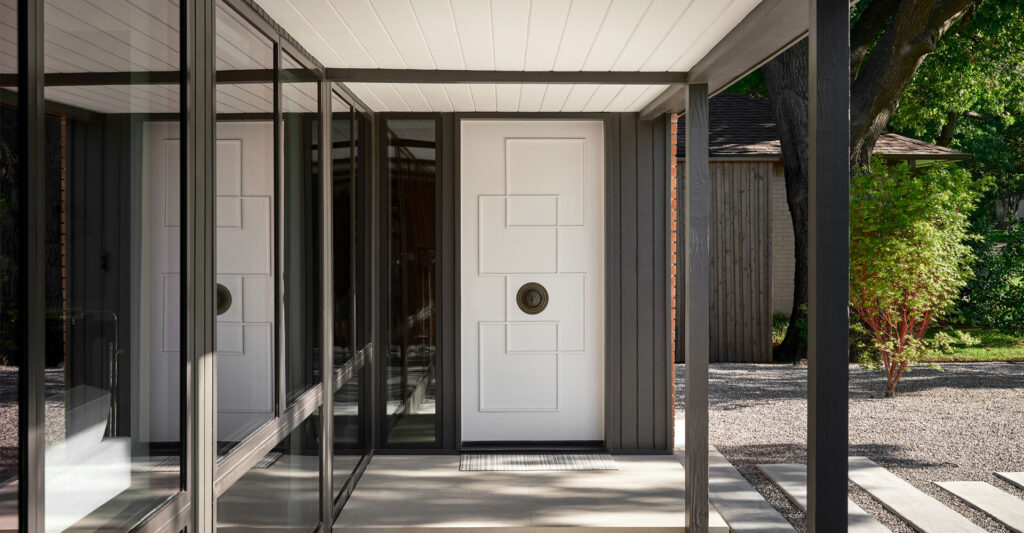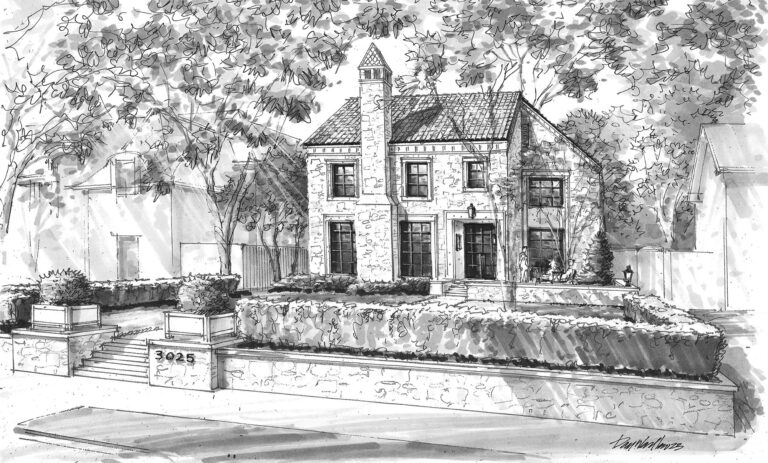How Do HOA Rules Affect Custom Home Design In Dallas?
You are here: Home → Architecture Advice Center → Building in Dallas
Related posts

When you’re planning a custom home in Dallas, you most likely first think of style, layout, and finishes. But if your lot sits inside a neighborhood with a homeowners’ association, there’s another layer to consider: the rules. HOA rules shape what you can and can’t do, and ignoring them can cost time, money, and frustration. If you want your home to turn out the way you envision, you need to understand from the beginning how these rules affect design.
What HOA Rules Usually Cover
HOAs exist to protect neighborhood character and property values. To accomplish that, they monitor and regulate design elements and construction practices. The scope of this varies, but most HOA rules include:
- Exterior materials and finishes
- Roof types, slopes, and colors
- Window styles and placement
- Landscaping and tree removal
- Fencing height and material
- Placement of driveways, garages, and outbuildings
In many Dallas luxury communities, the HOA rules are extensive. They can run the gamut from paint colors to whether you can have a flat roof. If your design conflicts with them, you won’t get approval to build.
Why They Matter Early
The biggest mistake most homeowners make is designing a house without checking the HOA rules first. An architect might spend weeks or even months putting together a design, and then immediately be sent away. That means redesign fees, delays, and headaches.
For example, if you want a bold contemporary design in a community that only allows pitched roofs, you’re setting yourself up for conflict. Or if you want to build a guest house but the HOA prohibits detached structures, you’ll have to rethink your plan altogether.
Knowing the rules upfront means you design within the framework, not against it.
The Approval Process
For most HOAs, you will have to submit your design to an architectural review committee, and this is not just a formality; it is a requirement. The committee will review your plans for compliance. They might:
- Approve outright
- Approve with conditions
- Request revisions
- Reject designs that violate guidelines
This process can take weeks and, in some communities, multiple rounds of submissions are common. When you’re building a custom home, you need to take this timeline into consideration with your schedule.
Common Restrictions in Dallas HOAs
Dallas HOAs can vary drastically, but here are some common rules that affect custom home design:
- Roof pitch requirements: Many HOAs forbid flat or low-slope roofs
- Exterior material limits: Some neighborhoods require a percentage of brick or stone
- Height restrictions: Even if city zoning allows a higher structure, the HOA can prohibit it
- Garage placement: Many HOAs ban front-facing garages
- Tree preservation: In addition to city ordinances, HOAs may add stricter rules
- Colour schemes: Bright or unusual colors can be forbidden
For example, there are usually more stringent aesthetic regulations in upscale neighborhoods such as Highland Park or University Park. Modern neighborhoods may be more lenient but still have controls regarding scale and materials.
The Balance Between Vision and Rules
Many homeowners fear that HOA rules stifle creativity. They don’t have to. It’s all about balance. A truly talented architect is able to create within the rules and still produce a very unique, personal home.
For example, if the HOA requires a pitched roof but your client wants a modern feel, it can use simple gable forms with sleek detailing. If there are requirements for exterior material percentages, thoughtful combinations of stone and stucco can yield a contemporary look without breaking the rules.
HOA rules set boundaries, but within them, there’s room for individuality.
The Cost of Non-Compliance
You cannot ignore the rules set by the HOA. If you build without approval, then the HOA can:
- Force you to stop building
- Require costly modifications or removals
- Fine you daily until you comply
- Sue for enforcement
Such situations are not uncommon. Sometimes, a homeowner will try to push the limits with the city, only to end up having to pay double. Tearing down an unapproved structure is much more expensive than merely adjusting the design.
How to Work With HOA Rules
If you want a smooth process, follow the following steps:
- Get the rules early. Ask for the full set of design guidelines before design starts
- Engage your architect, share the rules so your design meets requirements
- Communicate with the HOA: Submit preliminary sketches for comments prior to final plans
- Plan for revisions. Build time into your schedule for committee comments
- Keep records. Document all approvals throughout construction for your protection
Working with, rather than against, the HOA saves time and money.
When Rules Add Value
It’s easy to view HOA rules as restrictions, but they also protect your investment. Otherwise, neighborhoods could quickly lose cohesion. Imagine paying millions for a custom home, only to have a neighbor build something completely out of character next door. The rules prevent that.
In Dallas, where luxury communities compete with prestige, consistency of quality is part of the appeal. HOA rules help ensure that every home contributes to the neighborhood’s long-term value.
Building a home in Dallas is already complicated. Throw HOA rules into the mix, and the need for careful planning increases exponentially. Everything from the roofline down to the landscaping plays into compliance that isn’t optional; with the right approach, it doesn’t have to limit your vision. When you work with an architect who knows how to interpret those HOA requirements and balance them against your goals, you’ll end up with a home reflecting your style, satisfying the committee, and adding lasting value to your neighborhood.



